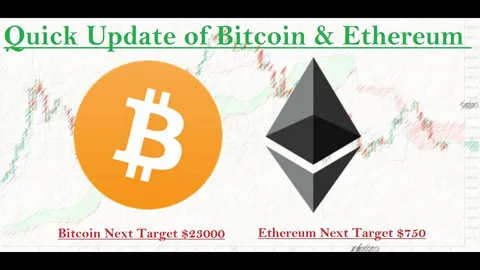Introduction
The world of cryptocurrency is inherently tied to shifts in global politics and macroeconomic trends, with the US elections standing out as one of the most impactful events. Given the influential role of the US in shaping global finance, changes in leadership or policy can create ripples across cryptocurrency markets.
In particular, the outcomes and post-election policies around fiscal spending, regulatory changes, and economic management influence investor sentiment toward BTC and ETH, two of the most traded cryptocurrencies.
This blog post examines how the BTC and ETH prices are likely to respond in the short and long term to the aftermath of the US elections. We’ll explore how market trends, macroeconomic policies, and potential regulatory shifts could impact these flagship cryptocurrencies. By looking at past election cycles, price trends, and predictions for the future, we aim to provide a comprehensive outlook for the investors and enthusiasts.

1. Election Impacts on the Global Financial Landscape
US elections have a historical impact on both traditional and digital asset markets. The cryptocurrency market, being relatively new, has increasingly shown correlation with broader financial markets, especially during major events. Here’s a closer look at how:
1.1 Economic Policy and Fiscal Stimulus
Following the election, fiscal policies aimed at supporting economic growth often get reassessed. For example, increases or decreases in government spending can alter inflation expectations, which in turn affect the perceived value of BTC as a hedge against inflation. Likewise, economic stimulus packages or policies aimed at reducing inflation can significantly impact the market’s liquidity levels, shaping demand for them.
1.2 Regulatory Stance on Cryptocurrencies
The regulatory outlook for cryptocurrencies often shifts with new leadership. If post-election changes bring crypto-friendly policymakers, we might see a positive impact on both BTC and ETH, especially if legislation favors blockchain innovation or tax incentives for crypto adoption. Conversely, stringent regulatory policies could restrict trading freedoms or increase tax burdens, potentially dampening investor interest in cryptocurrencies.
1.3 Geopolitical Stability and Market Sentiment
Political stability (or lack thereof) in the US influences investor confidence in traditional and digital assets. For instance, heightened geopolitical tensions or internal policy conflicts may lead to greater market volatility, which often pushes investors to view BTC as a “safe-haven” asset similar to gold. ETH, while less regarded as a haven, could still benefit from a spike in general crypto interest as investors seek alternatives to traditional markets.
2. BTC and ETH Price Volatility Post-Election
Historically, BTC and ETH prices have reacted to shifts in market sentiment after elections. Here’s what recent patterns reveal:
2.1 Historical Trends and Patterns
Looking at past US election cycles, both BTC and ETH tend to experience significant volatility. For instance, in 2020, the election led to substantial BTC gains as a result of increased institutional interest amid economic uncertainties. Ethereum saw similar growth, especially as it was moving toward the launch of ETH 2.0, capturing attention from investors looking for decentralized finance (DeFi) opportunities.
2.2 Short-Term Price Predictions
Following elections, BTC and ETH often see a period of increased volatility as markets digest the political changes and potential policy impacts. In the short term, price action could fluctuate based on speculative sentiment, with BTC likely to experience stronger rallies or drops due to its popularity among both retail and institutional investors. ETH, meanwhile, may follow BTC’s lead but could also see independent movement tied to its upcoming technology upgrades or DeFi and NFT market dynamics.
2.3 Long-Term Projections
Longer-term projections often depend on how the new administration handles crypto regulation and economic policies. A crypto-supportive environment could encourage further institutional adoption, potentially pushing BTC toward new highs, while ETH may benefit from the ongoing growth in the DeFi and Web3 sectors. However, stringent regulations may stall these gains, as investor confidence could wane under more restrictive policies.
3. Macroeconomic and Regulatory Outlook for BTC and ETH
Cryptocurrency markets are particularly sensitive to macroeconomic factors, and both of them are influenced by shifts in interest rates, inflation, and regulations:
3.1 Inflation and Interest Rates
High inflation often leads investors to seek alternative assets as a store of value, with BTC seen as “digital gold.” In an inflationary environment, BTC might see increased demand as it’s considered an inflation hedge. ETH, while not necessarily viewed as a hedge, could also experience growth if investor capital flows more broadly into digital assets in times of high inflation.
3.2 Institutional and Regulatory Adoption
As institutional players enter the crypto space, their adoption of both of them influences the overall market. For instance, if a favorable regulatory environment encourages more institutions to adopt or invest in BTC and ETH, we could see a corresponding price increase due to demand inflows. Conversely, regulatory challenges could impose barriers, slowing institutional momentum and impacting prices.
3.3 Legislative and Tax Changes
With each new administration, changes in tax policies and cryptocurrency legislation can greatly affect both BTC and ETH markets. If tax policies become more favorable for cryptocurrency holders, it could drive greater interest in long-term investments. Alternatively, higher capital gains taxes or crypto-specific taxes might disincentivize investors from holding these assets, causing a downward price effect.
4. Technological and Network Trends Affecting BTC and ETH
BTC and ETH also derive their value from technological advances and adoption trends. Here’s what the future could hold based on current network developments:
4.1 Bitcoin Network and Taproot Update
Bitcoin’s Taproot update, designed to improve transaction privacy and scalability, could attract more institutional interest by making BTC transactions more efficient and secure. As Bitcoin’s adoption for institutional and retail payments grows, such upgrades are vital in enhancing its use cases beyond a store of value.
4.2 Ethereum’s Shift to Proof of Stake (PoS)
Ethereum’s transition to Proof of Stake (PoS) has been pivotal, not just for reducing environmental impact but for scaling the network to support the growing demand in DeFi and NFT applications. This upgrade enhances Ethereum’s utility, potentially driving demand for ETH as it becomes the foundation for Web3.
4.3 Layer 2 Solutions and Scalability
The adoption of Layer 2 solutions, such as Bitcoin’s Lightning Network and Ethereum’s rollups, is critical for both networks to handle increased transaction volumes efficiently. As these solutions mature, they can attract more retail and institutional users by reducing transaction fees and improving processing speeds, which would likely enhance BTC and ETH’s appeal as viable, scalable financial assets.
Conclusion
The post-election landscape brings new challenges and opportunities for the cryptocurrency market, especially for BTC and ETH. Both assets stand to gain from favorable economic policies and technological advancements, but they also face risks from potential regulatory changes. BTC’s appeal as an inflation hedge and ETH’s role in the evolving Web3 and DeFi ecosystem place them at the center of the crypto market’s future.
As we look ahead, the impact of these political and economic changes on BTC and ETH prices will become clearer. Investors, traders, and enthusiasts can anticipate that the evolving financial climate will continue to shape these cryptocurrencies’ trajectories.
What are your thoughts on BTC and ETH’s outlook post-election? Leave a comment below and let’s discuss where these assets might be headed!






